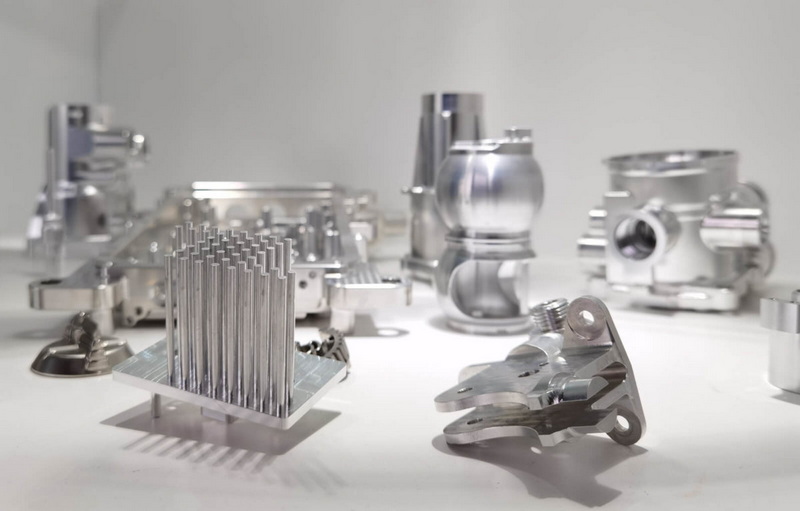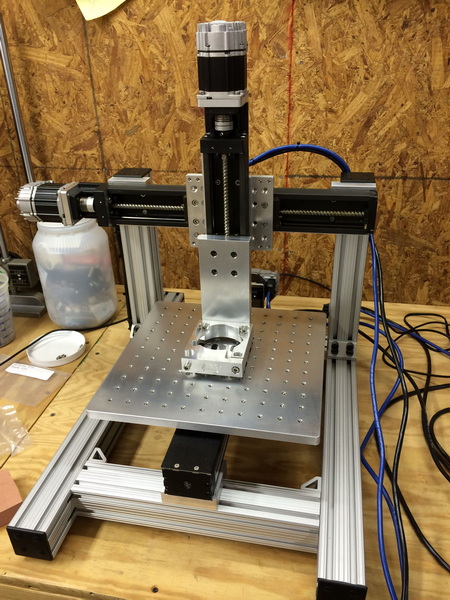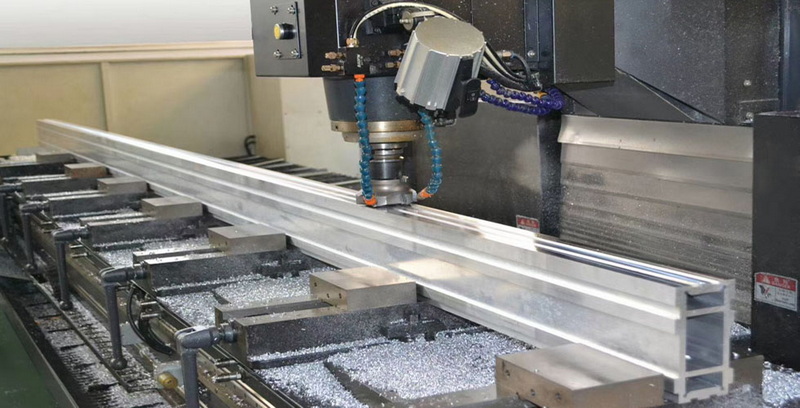Content Menu
● Understanding Aluminum Extrusion
● The Role of CNC Machining in Aluminum Extrusion
● Key Benefits of Using CNC Machining for Aluminum Extrusion
>> Precision and Accuracy
>> Increased Efficiency
>> Flexibility in Design
>> Consistency and Repeatability
>> Reduced Waste
>> Enhanced Safety
>> Capability for Complex Geometries
>> Cost-Effectiveness
>> Improved Surface Finish
>> Integration with Other Technologies
● Applications of CNC Machining in Aluminum Extrusion
● Conclusion
● Frequently Asked Questions
>> 1. What is the difference between CNC machining and traditional machining?
>> 2. Can CNC machining be used for materials other than aluminum?
>> 3. How does CNC machining improve product quality?
>> 4. What industries benefit most from CNC machining for aluminum extrusion?
>> 5. Is CNC machining suitable for small production runs?
Understanding Aluminum Extrusion
Aluminum extrusion is a manufacturing process that involves shaping aluminum alloy by forcing it through a die. This process creates a continuous profile with a uniform cross-section, which can be cut to desired lengths. The versatility of aluminum makes it a popular choice in industries such as automotive, aerospace, construction, and consumer goods. The aluminum extrusion process is not only efficient but also allows for the creation of complex shapes that would be difficult to achieve with other manufacturing methods.

The Role of CNC Machining in Aluminum Extrusion
CNC (Computer Numerical Control) machining complements the aluminum extrusion process by providing high precision and repeatability. CNC machines are programmed to perform various operations, including cutting, drilling, milling, and finishing, with minimal human intervention. This automation not only enhances productivity but also ensures consistent quality across all produced parts. The integration of CNC technology into aluminum extrusion processes has transformed the way manufacturers approach production, leading to significant advancements in efficiency and quality.
Key Benefits of Using CNC Machining for Aluminum Extrusion
Precision and Accuracy
One of the most significant advantages of CNC machining is its ability to produce parts with exceptional precision. CNC machines operate based on computer-generated designs, allowing for intricate details and tight tolerances. This level of accuracy is crucial in industries where even the slightest deviation can lead to product failure. The precision of CNC machining ensures that components fit together perfectly, which is especially important in applications such as aerospace and automotive manufacturing.
Increased Efficiency
CNC machining significantly reduces production time compared to traditional machining methods. Once a design is programmed into the CNC machine, it can produce parts continuously without the need for manual adjustments. This efficiency translates to lower labor costs and faster turnaround times, making it an attractive option for manufacturers. Additionally, the ability to run machines unattended during off-hours further enhances productivity, allowing companies to maximize their output.
Flexibility in Design
CNC machining allows for greater flexibility in design compared to conventional methods. Designers can easily modify CAD (Computer-Aided Design) files to accommodate changes in specifications or to create custom parts. This adaptability is particularly beneficial in industries that require rapid prototyping and iterative design processes. The ability to quickly adjust designs and produce new prototypes enables companies to respond swiftly to market demands and customer feedback.
Consistency and Repeatability
CNC machines excel in producing consistent results across multiple production runs. Once a program is set, the machine can replicate the same part with identical specifications repeatedly. This consistency is vital for maintaining quality standards and ensuring that all components fit together seamlessly in assembly. The repeatability of CNC machining reduces the risk of errors and defects, leading to higher overall product quality.
Reduced Waste
CNC machining minimizes material waste through precise cutting and shaping. Traditional machining often involves significant waste due to manual adjustments and trial-and-error methods. With CNC, the material is used more efficiently, leading to cost savings and a reduced environmental impact. This efficient use of materials is particularly important in today's manufacturing landscape, where sustainability is a growing concern.
Enhanced Safety
CNC machining enhances workplace safety by reducing the need for manual handling of tools and materials. Operators can monitor the machining process from a safe distance, minimizing the risk of accidents. Additionally, CNC machines are equipped with safety features that prevent unauthorized access and ensure safe operation. The automation of machining processes also reduces the likelihood of human error, further contributing to a safer work environment.
Capability for Complex Geometries
CNC machining is particularly well-suited for producing complex geometries that would be challenging or impossible to achieve with traditional methods. This capability opens up new possibilities for product design, allowing engineers to create innovative solutions that meet specific performance requirements. The ability to manufacture intricate shapes and features enhances the functionality and aesthetic appeal of products.
Cost-Effectiveness
While the initial investment in CNC machinery may be higher than traditional equipment, the long-term cost savings are significant. The efficiency, precision, and reduced waste associated with CNC machining lead to lower production costs over time. Additionally, the ability to produce high-quality parts consistently reduces the likelihood of costly rework or scrap. This cost-effectiveness makes CNC machining an attractive option for manufacturers looking to improve their bottom line.

Improved Surface Finish
CNC machining can achieve superior surface finishes compared to manual machining. The automated processes allow for finer cutting tools and more controlled machining conditions, resulting in smoother surfaces. This quality is essential for applications where aesthetics and functionality are critical. A better surface finish can also enhance the performance of components by reducing friction and wear.
Integration with Other Technologies
CNC machining can be easily integrated with other manufacturing technologies, such as additive manufacturing and robotics. This integration allows for more streamlined production processes and the ability to create hybrid components that leverage the strengths of multiple manufacturing methods. The combination of CNC machining with other technologies can lead to innovative manufacturing solutions that enhance efficiency and product quality.
Applications of CNC Machining in Aluminum Extrusion
CNC machining is widely used in various industries that rely on aluminum extrusion. Some common applications include:
- Automotive Components: CNC-machined aluminum extrusions are used in vehicle frames, heat exchangers, and structural components, providing lightweight yet strong solutions. The automotive industry benefits from the weight savings and strength of aluminum, which contribute to improved fuel efficiency and performance.
- Aerospace Parts: The aerospace industry demands high precision and reliability, making CNC machining essential for producing components such as brackets, housings, and support structures. The lightweight nature of aluminum is particularly advantageous in aerospace applications, where every ounce counts.
- Construction Materials: Aluminum extrusions are commonly used in building facades, window frames, and structural supports, where CNC machining ensures accurate dimensions and finishes. The durability and corrosion resistance of aluminum make it an ideal choice for construction applications.
- Consumer Products: Many everyday items, such as furniture, appliances, and electronics, utilize CNC-machined aluminum extrusions for their lightweight and durable properties. The aesthetic appeal of aluminum also makes it a popular choice for consumer products.
Conclusion
The integration of CNC machining in aluminum extrusion processes offers numerous benefits, including precision, efficiency, flexibility, and cost-effectiveness. As industries continue to evolve and demand higher quality and faster production times, CNC machining will play a crucial role in meeting these challenges. By leveraging the advantages of CNC technology, manufacturers can enhance their capabilities and deliver superior products to the market.

Frequently Asked Questions
1. What is the difference between CNC machining and traditional machining?
CNC machining is automated and controlled by computer programs, allowing for higher precision and efficiency, while traditional machining relies on manual operation and adjustments.
2. Can CNC machining be used for materials other than aluminum?
Yes, CNC machining can be used for various materials, including plastics, metals, and composites, making it a versatile manufacturing method.
3. How does CNC machining improve product quality?
CNC machining ensures consistent precision and repeatability, reducing the likelihood of defects and ensuring that all parts meet specified tolerances.
4. What industries benefit most from CNC machining for aluminum extrusion?
Industries such as automotive, aerospace, construction, and consumer goods benefit significantly from CNC machining due to the need for high-quality, precise components.
5. Is CNC machining suitable for small production runs?
Yes, CNC machining is suitable for both small and large production runs, making it an ideal choice for prototyping and custom manufacturing.






















